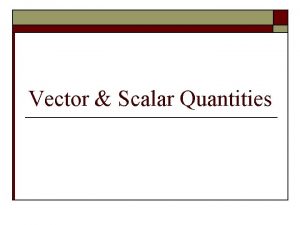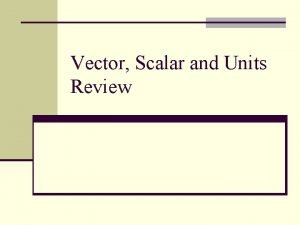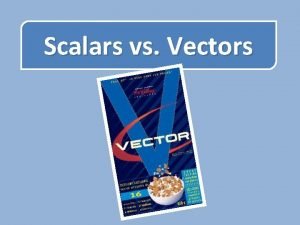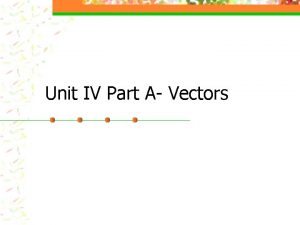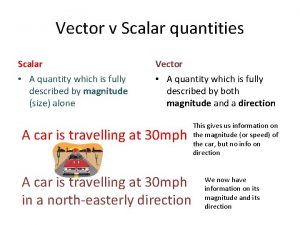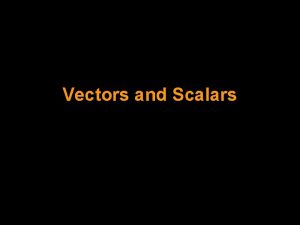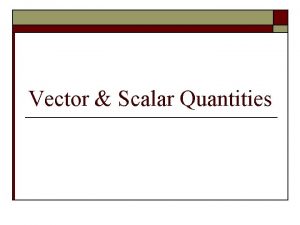Topic Scalar and Vector Scalar Quantities Example of








- Slides: 8

Topic Scalar and Vector Scalar Quantities Example of scalar Quantities Vector Quantities Example of Vector Quantities Characteristics of scalar and vector Similarity between vector and scalar Difference between scalar and vector

Introduction There wre two type of quantities describing fluid flows: scalar and vector quantities. ü Scalar quantities are quantities that are described only by a magnitude. They do not have a direction of action. For fluids the relevant scalar quantities are • temperature T , measured in K • density ρ, measured in kg m− 3 • pressure p, measured in Pa ü Vector quantities have both magnitude and a direction of action. The relevant vector quantities of fluid flows are • position , measured in m • velocity , measured in m s− 1 • acceleration , measured in m s− 2

Scalar Quantities A scalar or scalar quantity in physics is a physical quantity that can be described by a single element of a number field such as a real number, often accompanied by units of measurement (eg. cm). A scalar is usually said to be a physical quantity that only has magnitude, possibly a sign, and no other characteristics. This is in contrast to vectors, tensors, etc. which are described by several numbers that characterize their magnitude, direction, and so on. Volume, Speed, Mass, Density, Number of Moles and Angular Frequency are example of scalar.

Scalar formula • The scalar product of two vectors can be constructed by taking the component of one vector in the direction of the other and multiplying it times the magnitude of the other vector. • The scalar product is also called the "inner product" or the "dot product" in some mathematics texts. • a. b=|a||b|cos

Vector Quantities: Vector quantities refer to the physical quantities characterized by the presence of both magnitude as well as direction. For example, displacement, force, torque, momentum, acceleration, velocity, etc. Unit The only basic SI unit that is a vector is the meter. Some examples of vectors are displacement (e. g. 120 cm at 30°) and velocity (e. g. 12 meters per second north). Symbol Vector quantities (F, g, v) are written in a bold, serif font — including vector quantities written with Greek symbols (α, τ, ω).

Characteristics Vector quantities have two characteristics, a magnitude and a direction. Scalar quantities have only a magnitude. When comparing two vector quantities of the same type, you have to compare both the magnitude and the direction. For scalars, you only have to compare the magnitude.

Similarity between vector and scalar Quantities Similarities between scalar and vector • Both scalar quantity and vector quantity express certain physical quantity. • Both scalar quantities and vector quantities are measurable (can be measured using suitable instrument) and quantifiable (can be expressed as numerical magnitude with corresponding unit of measurement). • Both scalar quantities and vector quantities have certain finite magnitude. • Both scalar quantities and vector quantities have specific dimension and unit.




